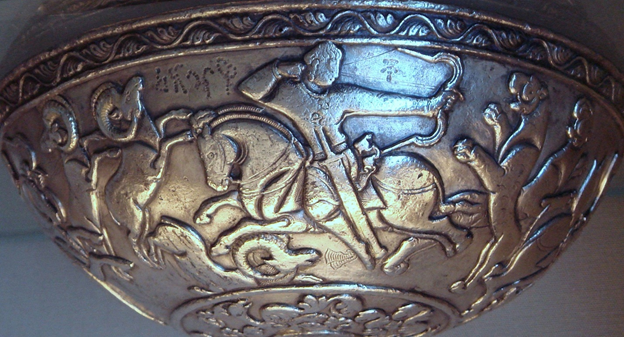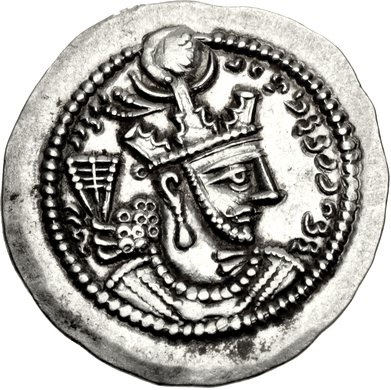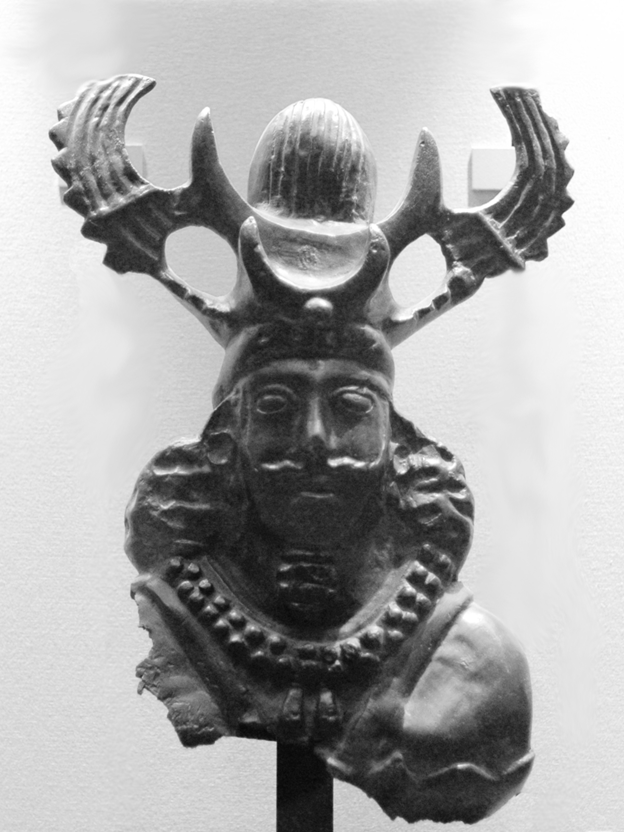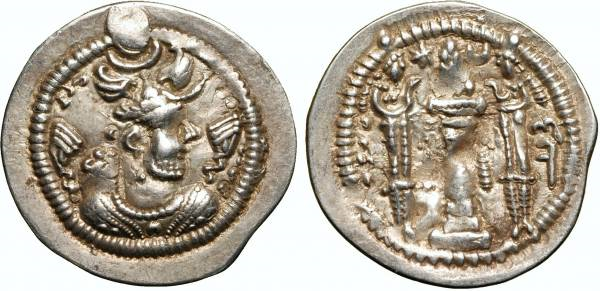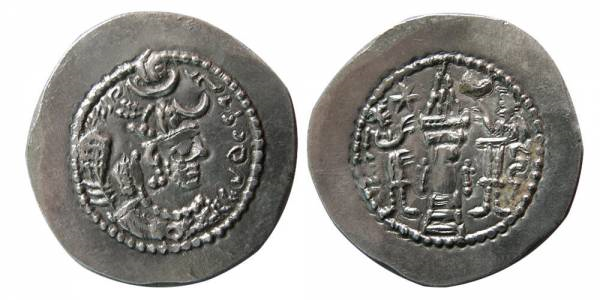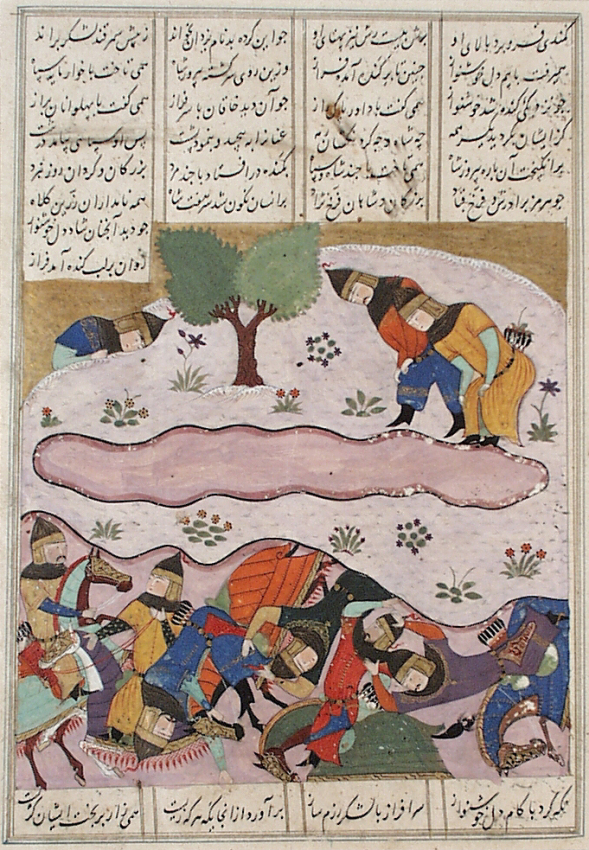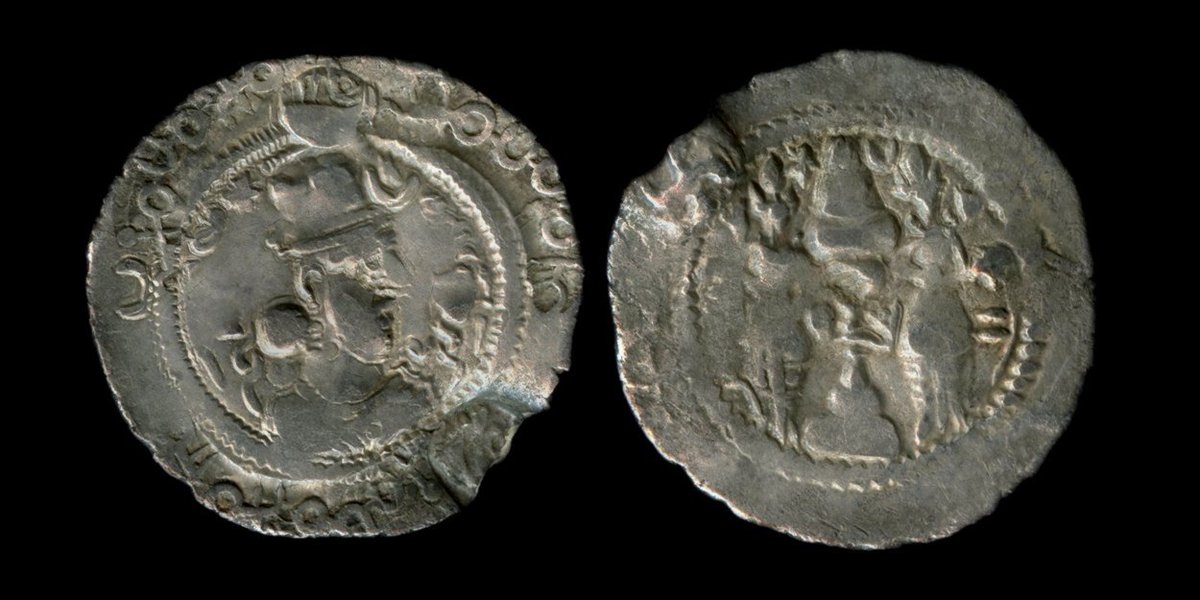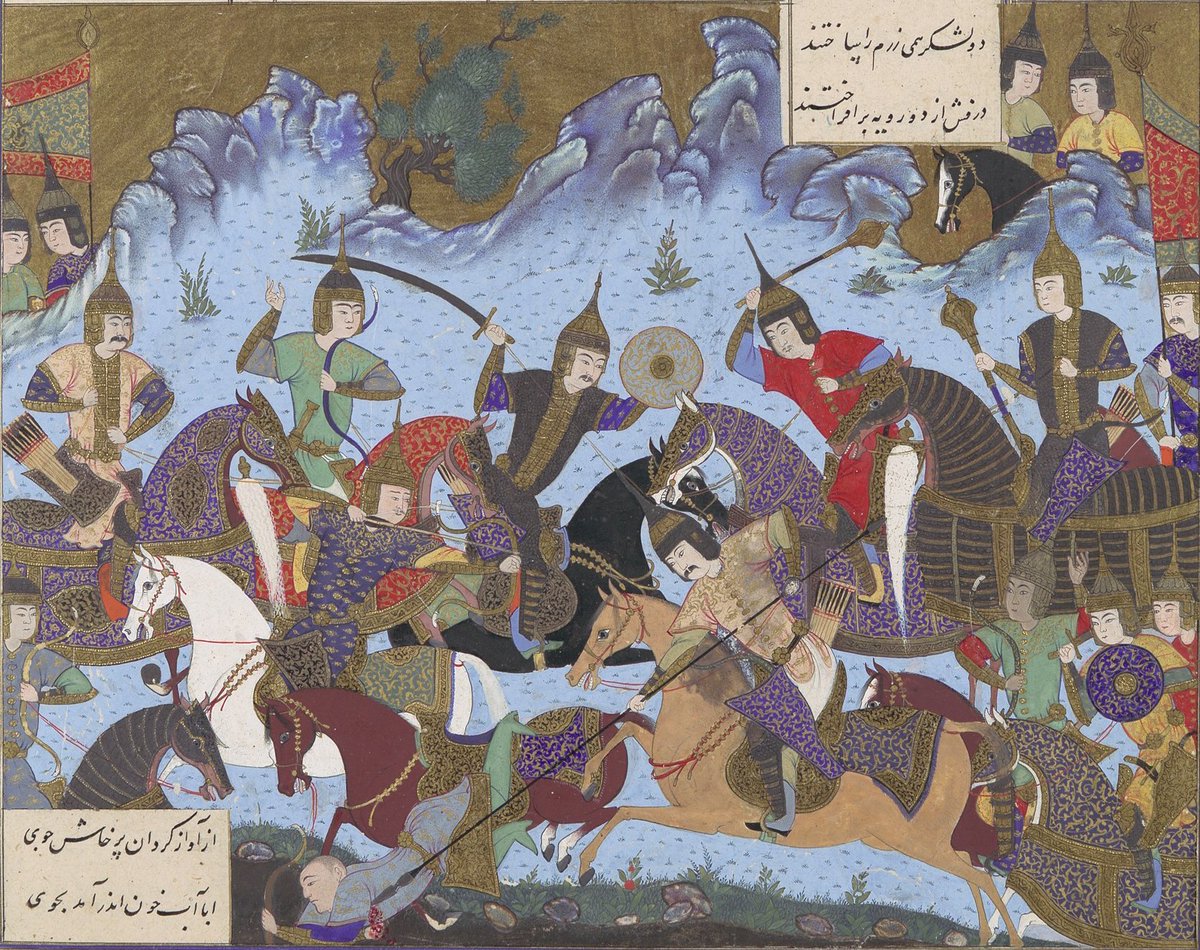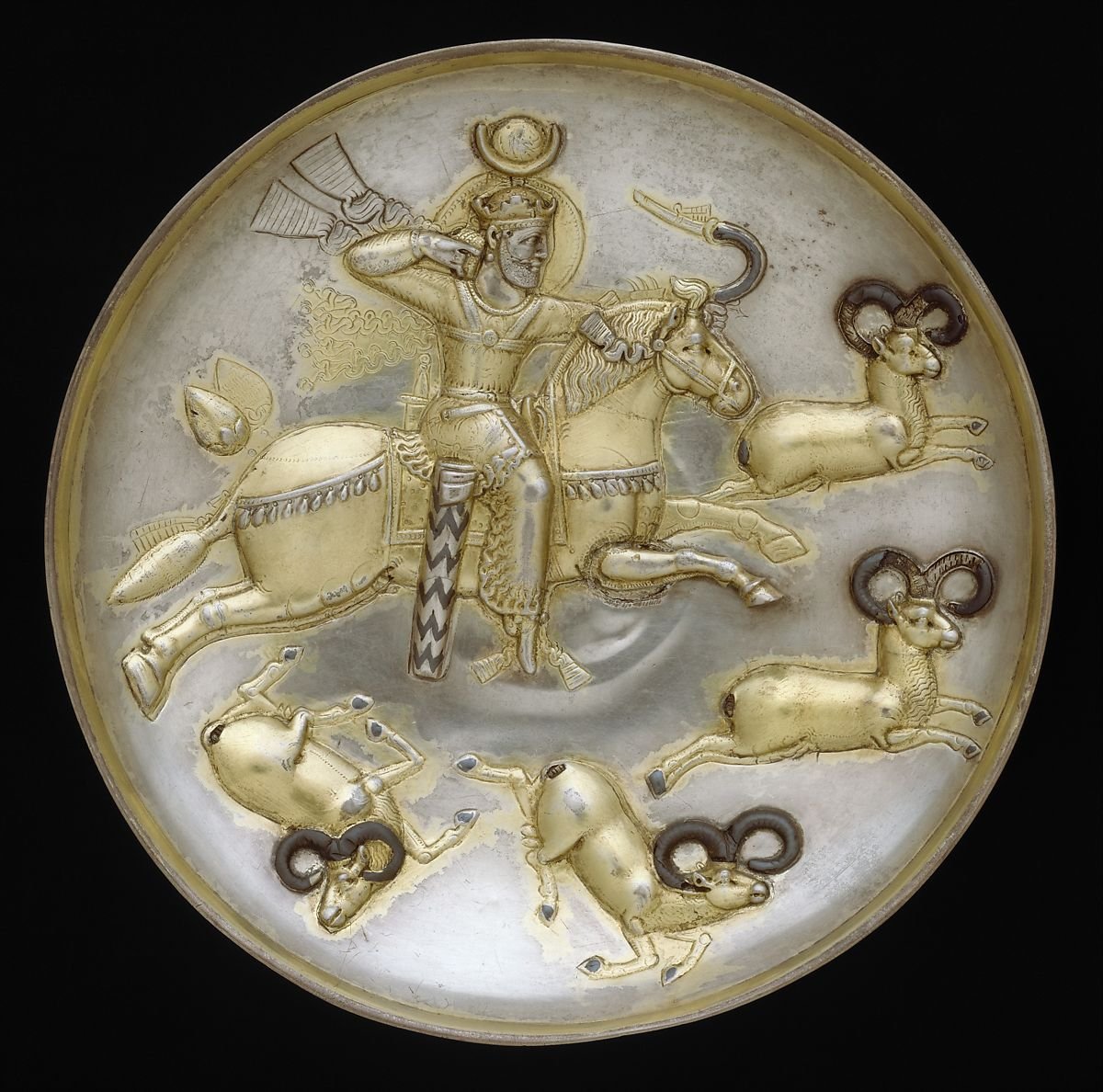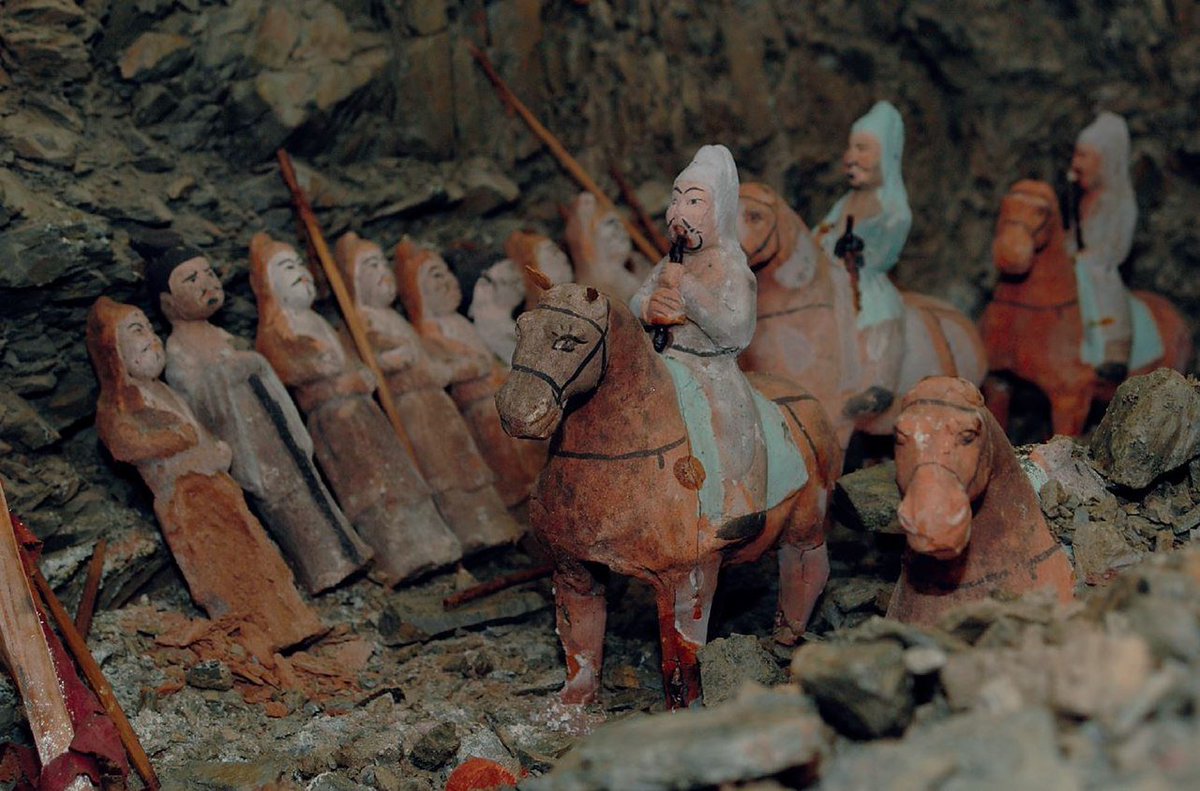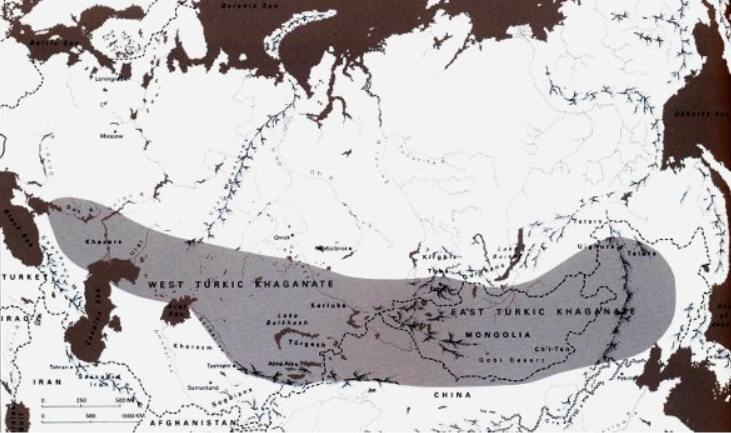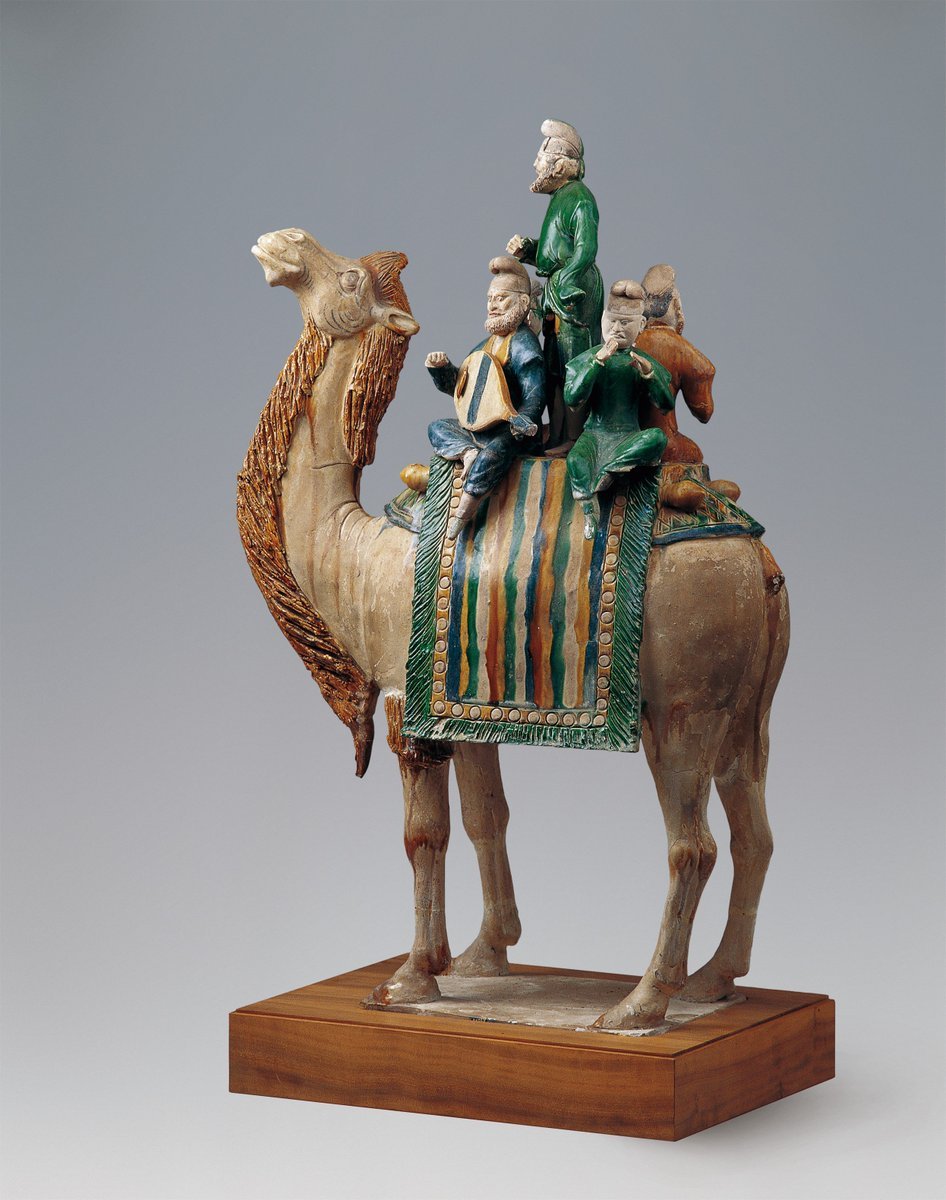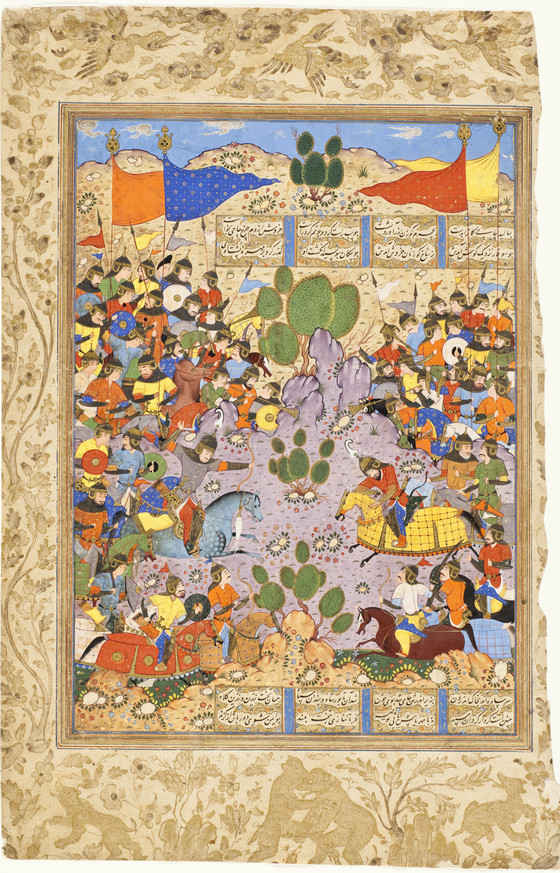@Rob_Haug back for day four of the eastern frontier. Yesterday I started talking about the eastern frontiers of the Sasanian Empire, but, surprisingly, had trouble fitting four centuries into a couple dozen tweets. So here is Sasanian Frontiers Part 2. rh 1/
After the rise of the Kidarites, Tukharistan and Transoxiana were pretty much beyond the reach of the Sasanians, but the next wave of Hunnic invaders, the Hephthalites, threatened Khurasan too. “Hephthalite Bowl” 460-479, found in Swat, Pakistan, British Museum. rh 2/
The Hephthalites emerged at a critical moment in Sasanian history. In the 450s, Yazdgird II (r. 438-457) led a series of successful campaigns against the Kidarites that supposedly pushed them into the mountains. He even moved his capital to Nishapur for a while. rh 3/
But then he died suddenly and fighting broke out between two of his sons, Hormozd, who took the throne as Hormozd III, and Piruz. Piruz fled from his brother and sought support from the newly arrived Hephthalites. (Bust of Piruz? in the Lourve) rh 4/
Piruz promised the Hephthalites some of the land Yazdgird had taken from the Kidarites and, in return, they helped him achieve the throne. The Kidarites were then squashed between Piruz and the Hephthalites, but it was the Hephthalites who took the Kidarite domains. rh 5/
The Hephthalites were the Sasanian’s neighbors, but also players in Sasanian politics. By 469, tensions had built up and Piruz led three disastrous campaigns east. The first was perhaps against a remnant of the Kidarites while the other two targeted the Hephthalites. rh 6/
This first campaign resulted in a defeat. Piruz was captured, forced to pay a ransom, and then bow down before his enemy in an act of humiliation. BTW One of the ways we confirm Piruz’s defeats is by the different crowns that appear on his coins, new one after each loss. rh 7/
His last two campaigns were definitely targeted against the Hephthalites, specifically a king often called Khushnavaz or Akhshunwar in later sources. Here the Hephthalites use cunning to defeat the Sasanians army. (Shahnama ill. ca. 1590, Shiraz in British Library) rh 8/
During the second campaign, Piruz was lured into the desert and then ambushed when his troops were thirsty and exhausted. He was forced to pay the Hephthalites 30 mule loads of silver but could only come up with 20. The previous ransom had depleted the treasury. rh 9/
As Piruz raised the funds, his young son Qubad was kept as a hostage among the Hephthalites. Piruz eventually had to borrow the money from the Byzantines, who were already contributing financially to the defenses against the Kidarites and Hephthalites. rh 10/
The third campaign was a total disaster. I want to walk through the version of this campaign that appears in the chronicle of the 10th century historian Tabari for some interesting details about the frontier between the Sasanians and the Hephthalites. rh 11/
Thinking about the ways frontiers are represented, according to Tabari& #39;s account, a tower had been placed between the Sasanians and Kidarites during Bahram Gur& #39;s reign marking the border and following Piruz& #39;s second defeat, he promised that he would never cross it again. rh 12/
So, when he came upon this border marker, in Tabari& #39;s version, Piruz chained 50 elephants and 300 men to the tower and then sent them before the army, dragging the tower and therefore the border so that Piruz and his army never violated the peace by crossing the tower. rh 13/
Akhshunwar did not find this amusing and rightfully called out Piruz for violating the treaty. Many of Piruz& #39;s soldiers agreed and they are described as being unhappy about participating in such a fraudulent campaign. But Akhshunwar had his own trick in store too. rh 14/
The Hephthalites built a trench, covered it and then lured the Sasanian army so that when they charged they all fell in and died, including Piruz. The defeat left the Sasanians leaderless, broke and with a decimated army. (ill. Shiraz ca. 1485, in LACMA) rh 15/
Afterwards, the Hephthalites invaded and, according to Byzantine historian Procopius, the Sasanians became their tributary. Tribute paid to the Hephthalites is evident in large numbers of coins of Piruz, his son Qubad, and grandson Khusrow I with Hephthalite countermarks. rh 16/
That last coin may also be an imitation. 16.5/
Khurasan was recaptured and, according to legend, many hostages and spoils brought back to Iran through a reprisal raid led by the Parthian nobleman Sukhra. (Sukhra defeating Kushnavaz from the Shahnama of Shah Tahmasp, 1527, Tabriz, currently in the Met) rh 17/
Sukhra was the power behind the throne for Piruz& #39;s brother Bilash (r. 484-488), who became the new emperor in Iran. But Piruz& #39;s son Qubad contested this succession and fled, like his father, to the Hephthalites who then helped him take the throne from his uncle. rh 18/
Qubad& #39;s (r. 488-497, 499-531) reign is more famous for the Mazdak controversy (which left him deposed, during which time he again fled to the Hephthalites for support), but these connections with the Hephthalites are equally important. Plate in Met collection. rh 19/
We may even talk about a pro-Hephthalite party forming that sought support from their Hunnic neighbors in return for continued tribute. This may also be a realist approach addressing the fact that Piruz& #39;s failures had left the empire militarily and financially vulnerable. rh 20/
Hephthalite domination ended the mid 6th century with the appearance of the Turks. While the Sasanians under Khusrow I (r. 531-579) claimed to have defeated their rivals in coordination with the Turks, there is greater evidence that the Turks achieved this on their own. rh 21/
And it is also clear that the Turks didn& #39;t eliminate the Hephthalites entirely, they continued to rule in the highlands of Tukharistan but more often appear as vassals of the Turk Khaqanate, a vast steppe empire that spread from the frontiers of Iran to those of China. rh 22/
The Turkish-Sasanian relationship had an important economic factor. The Turks sought an outlet for the silk they were receiving as tribute from China. Following expansion into Sogdiana, the Turks and Sogdians formed a cooperative partnership based around this trade. rh 23/
When they tried to expand into Iran, Khusrow famously burnt a shipment of silk, an act meant to protect Iranian merchants but also show of contempt for the Turks and their eastern spoils. Above: Tang earthenware camel with Sogdians from the National Museum of China. rh 24/
The Turks largely maintained a light footprint in Sogdiana and Tukharistan, allowing local rule with military support. This created a particular dynamic in which raids into Sasanian territory could be quickly repelled and expansion made to only be turned back entirely. rh 25/
Let& #39;s look at two examples, in 588 a Hephthalite attack on Khurasan took Badhghis and Herat before Hormozd IV (r. 579-590) could respond with a force under Parthian general Bahram Chobin (d. 591), better know for his later revolt and brief seizure of the Sasanian throne... rh 26/
Bahram was able to advance far into Tukharistan and Sogdiana, as far as Chach (Tashkent) and kill the Turkish khaqan in battle, but this didn& #39;t last for long. Political instability in Iran turned attention back west. Bahram Chobin and Sava Shah, Shiraz ca. 1560 in LACMA. rh 27/
The numismatic evidence confuses these accounts as Sasanian coins appear at Samarqand and Chach dated 582-4 and 585 respectively, or 3-6 years before Bahram& #39;s campaigns? Closer to the narrative sources, Sasanian coins reappeared at Balkh for the years 587-591. rh 28/
Raids continued into Khurasan from the east into the 7th century. Disruptions in coin production in eastern mints during the first decade of the century indicate ongoing struggles while chronicles report of Hephthalite and Turkish raids as far west as Isfahan. rh 29/
Khusrow II (r. 590-628) sent the Armenian prince Smbat IV Bagratuni (d. 617) to turn these raiders back. He was defeated once somewhere between Nishapur and the Oxus, but then was able to push all the way to Balkh, destroying Hephthalite fortifications along the way. rh 30/
But again, we have limited evidence these conquests of Tukharistan stuck. By then the Sasanians were focused on war with the Byzantines and then the Arab-Muslim conquest. From the arrival of the Hephthalites, the eastern frontier was clearly a dangerous space... rh 31/
...that absorbed a great deal of Sasanian efforts and wealth. Tomorrow I will turn to the regions of Khurasan, Tukharistan, and Transoxiana during the Arab-Muslim conquests and the transition from the Sasanian to Islamic era. rh 32/

 Read on Twitter
Read on Twitter